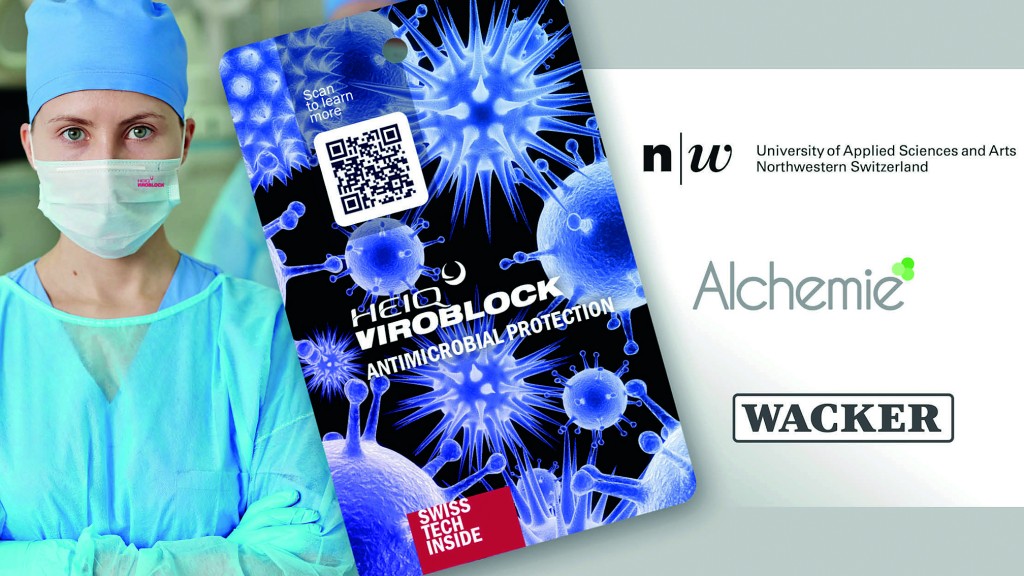- Get directions
- Leave a review
- Claim listing
- Bookmark
- Share
- Report
- prev
- next
- Tuesday, April 20, 2021 @ 10:00 am
The global pandemic has put society under incredible pressure, generating unexpected challenges in the health sector and massive repercussions in the global economy. But the partnerships between research organizations and industrial partners in the biotech sector have provided some timely solutions.

Laura Suter-Dick
biotechnet Switzerland | President
School of Life Sciences, FHNW | Professor for Molecular Toxicology
Throughout 2020, Biotechnet Switzerland continued to work closely with the Swiss Biotech Association to facilitate advances in biotechnology. When it comes to networking between the industrial sector and Swiss universities, particularly those in applied sciences, and research and technology organizations, we can make things happen.
Links that ignite innovation
The competence center and Biotechnet platform TEDD (Tissue Engineering for Drug Development and Substance Testing) hosted by the Zurich University of Applied Science (ZHAW), promotes the application of 3D organotypic technologies for drug discovery and therapy development.
In October 2020, the TEDD annual meeting was dedicated to human microphysiological systems (MPS). Many of the scientific talks addressed the SARS-CoV-2 pandemic. This was a natural development because in vitro human cell-based models can support research on virus infection, proliferation and treatment. The discussions highlighted the readiness of the MPS for industrial implementation. Not only can MPS have a major impact in reducing the number of animal experiments and supporting the 3Rs (Replacement, Reduction and Refinement of animal experimentation), human-based MPS can often lead to more relevant results than experiments with rodents. This is particularly true regarding research on SARS-CoV-2, as viral infections are prototypically species-specific.
POC diagnostics: fast and furious
Biotechnet’s thematic in vitro diagnostics platform (TP IVD) promotes technological innovation in the area of in vitro and point-of-care (POC) diagnostics by providing access to a network of experts. Better POC diagnostics are critical in tracing SARS-CoV-2 - a mobile, invisible and potentially deadly enemy. POC plays an important role, complementing central testing facilities that may be confronted with capacity and logistical challenges. Generating cost effective POC diagnostic systems however, requires an interdisciplinary approach combining elements from biology, chemistry, instrumentation, software engineering, and digitalization.
The 3rd Swiss Symposium in Point-of-Care Diagnostics, held in October 2020, provided an excellent way to bring together the know-how of key players including industry, medical and research organizations. It offered an opportunity to share scientific advances, end-user experiences, customer needs, regulatory requirements, and technological possibilities. The event was organized by Biotechnet’s TP IVD co-led by representatives from the University of Applied Sciences Western Switzerland (HES-SO) and Swiss Center for Electronics and Microtechnology (CSEM). This multi-sector ecosystem facilitates a smart “design thinking” process that promotes the development of customer-centered products.
Topics addressed included CRISPR/Cas9-based genetic engineering (research area awarded the 2020 Nobel Prize in Chemistry), blockchain technology, smart phone apps, immunology/immunity, and ergonomics. One of the hot topics for the next symposium, planned for October 21 2021 in Davos, is the role of POC diagnostics in the context of global vaccination programs.
Turning ideas into solutions
The DAVINCI consortium, including CSEM and FHNW (University of Applied Sciences North Western Switzerland) from Biotechnet, is funded by the Botnar Research Centre for Child Health. Its objective is to develop and validate a simple, inexpensive, and accurate rapid-diagnostic test device for antigens and antibodies in saliva.
In Europe, validated COVID-19 tests require nasopharyngeal swabs (for antigen detection) or blood samples (for antibody detection). This project aims to develop the first approved home‐use rapid diagnostic tests for COVID‐19 for non-trained users. It will combine an antigen-based test for early diagnosis of COVID-19 with an antibody test to evaluate the protection of individuals. The ongoing research showed that IgG (immunoglobulin G) and IgA (immunoglobulin A) anti-SARS-CoV-2 antibodies can be detected in saliva, and led to proprietary technical improvements to boost the sensitivity of lateral flow assays. In the future, the test kit could be adapted to other infectious diseases such as influenza.
Another example of agile innovation is the collaboration since January2021between theSchoolofLifeSciences(FHNW)and Biolytix AG. The two have partnered to ensure the canton of Baselland can perform PCR-based COVID-19 tests in saliva for a large number of students. Similarly, a pilot program testing thousands of school children in Baselland started in February. Mass-testing is an urgent need in-line with the Swiss governmental policy and these partnerships are making it possible.
Intelligent textiles for masks
SARS-CoV-2 increased the demand for antimicrobial impregnation products developed by the company HeiQ Materials AG. This is a textile technology company spun off from the Swiss Federal Institute of Technology in Zurich (ETH). HeiQ Viroblock NPJ03 is an antiviral and antibacterial textile treatment based on a unique combination of silver and vesicle technologies designed to reduce viral and bacterial infectivity.
Thanks to the collaboration with the Process Technology Center of FHNW, HeiQ was able to ramp up production to satisfy global demand within just one month. HeiQ Viroblock material technology has been adopted by more than 100 mask producers world-wide. The company is now providing safe protection to millions of people around the globe and in December 2020, HeiQ commenced trading on the London Stock Exchange.
Real-time remote patient monitoring
COMO is a Swiss-Italian project with the participation of CSEM in Neuchatel. It aims to develop real-time remote monitoring of patients who test positive for COVID-19. This service enables patients to stay at home while being remotely monitored by physicians.
The starting point for the project was an existing wearable system consisting of two sensors attached to a chest strap, equipped with rechargeable batteries, bluetooth modules, and electronic processors. Data are collected on mobile devices (the patient’s smartphone), aggregated with geo-referenced data and uploaded to an IT cloud platform.
The main objective of the pilot is to avoid the hospitalization of COVID-19 patients, as it enables physicians to efficiently monitor the evolution of patients’ symptoms and to react if critical parameters exceed predefined threshold values. The system is currently undergoing a first clinical trial at Luigi Sacco University Hospital in Milan.
Link: https://qrco.de/HeiQViroblock25
Source: HeiQ
The effectiveness of HeiQ’s antibacterial and antiviral textile treatment has allowed the technology to be adopted by more than 100 mask producers worldwide
Testing for previous infection
Swiss start-up Adamant Innotech and CSEM are developing a rapid, highly sensitive serological test to determine previous infection with the SARS-CoV-2 or other viruses. Adamant Innotech specializes in miniaturized optical technologies and has commissioned CSEM to work on a new test that detects, among others, the antibodies binding to the protein of SARS-CoV-2 in a blood sample.
In the foreseeable future, a first product should be available to the Swiss and Chinese markets. "Similar methods are being deployed in hospitals, but we offer a high-performance and competitive Swiss solution, which allows a wide range of tests to be carried out simultaneously," says Xiaoming Tang, managing director of Adamant Innotech.
The new biosensor, based on mature optical microarray technology, will provide results within two hours after simultaneously probing up to 20 different types of antibodies and tracing for various past infections, such as COVID-19, influenza or SARS.
Academia and industry exchanges: a two-way flow
Public-private partnerships not only promote research activities and collaborative projects, but also allow the bidirectional flow of skills and knowledge between academia and industry, ensuring the availability of optimally qualified personnel to fulfil the needs of the Swiss economy.
One such example is the recently established collaboration between Lonza and HES-SO in the context of the Ibex® Biopark in Valais (currently manufacturing the Moderna vaccine).
It addresses the availability of a qualified workforce in the field of biotechnology, and in specific areas of research focus.
Research on digitalization, automation and control of biotechnology processes will be performed in a joint research- laboratory. HES-SO will be key in the continuing education of Lonza personnel as a preferred partner and will, in turn, profit from industrial know-how that can be transmitted to the students. In addition, a joint marketing strategy will enhance the recruitment of students, who will in time become highly qualified personnel. From many aspects, a win-win situation!
The selected examples in this brief overview demonstrate how Biotechnet Switzerland is making a difference.
Our mission is to remove any bottlenecks in the development of innovations - and in 2020 we did just that. By providing the links between different individuals and organizations we fired the spark of innovation not only in the development of new technologies, but also in their application to the real-world challenges of the current pandemic.
Networking
Biotechnet Switzerland: https://biotechnet.ch/
3Rs: https://www.swiss3rcc.org/en/
POC: https://www.pocdx.ch/
TEDD: https://www.zhaw.ch/de/lsfm/forschung/chemie-und-biotechnologie/competence-centre-tedd/
Selected Innovations 2020
Virablock: https://heiq.com/2020/04/23/heiq-wacker-fhnw-and-alchemie-form-a-seamless-supply-chain Participants: collaboration between FHNW and HeiQ
DAVINCI: https://brc.ch/research/davinci/ https://www.csem.ch/page.aspx?pid=155121 Participants: (Lead: Swiss tropical and public health institute; Members: University of Basel, CSEM, Bioinitials, ETH Zürich, FHNW, Hemex, Effectum Medical)
Mass testing (Saliva-PCR-test): https://www.fhnw.ch/de/medien/newsroom/medienmitteilungen/medienmitteilungen-2021/fachhochschule-nordwestschweiz-fhnw-erster-zertifizierter-corona-speicheltest-fuer-studierende-im-kanton-baselland. Participants: FHNW and Biolytix
COMO: https://business.esa.int/projects/como. Participants: Vexatec AG (Lead), CSEM and EOS S.R.L, Italy.
Optical sensors: https://www.csem.ch/page.aspx?pid=154411 Participants: Adamant and CSEM
Talent development: https://www.hevs.ch/de/hochschule/hochschule-fur-ingenieurwissenschaften/systemtechnik/news/lonza-und-die-hes-so-valais-wallis-schliessen-einen-partnerschaftsvertrag-uber-10-jahre-ab-22990 Participants: HES-SO Valais and Lonza
